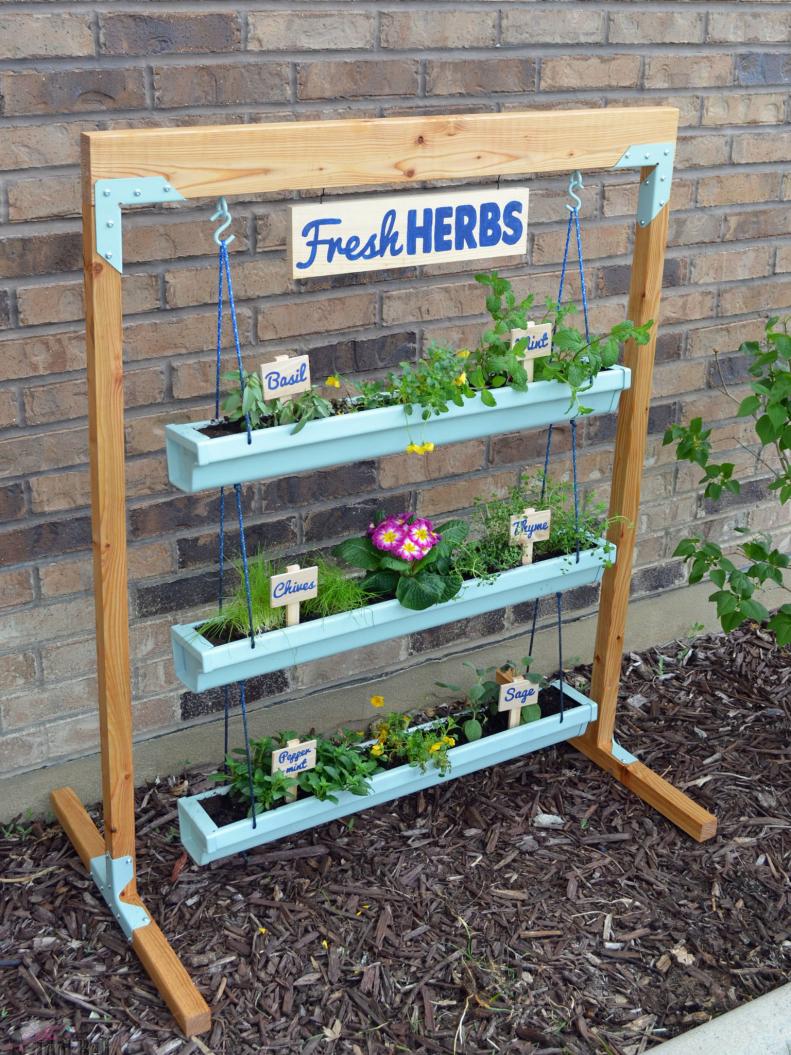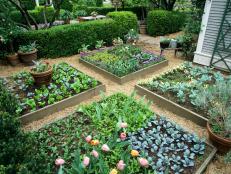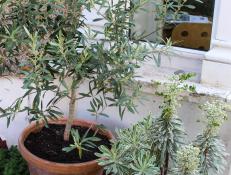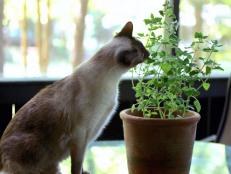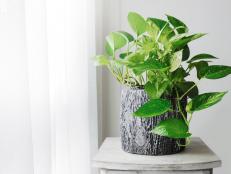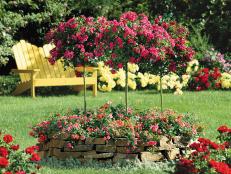1 / 35
Photo: Her Tool Belt
Grow Herbs Almost Anywhere in Almost Anything
Spice up your menus with the zingy flavors of fresh herbs. You don’t need an elaborate herb garden design to work flavorful sprigs and leaves into your family’s mealtimes. Many herbs thrive — and yield stems for snipping — in containers. But if you yearn for a formal herb garden design, you won’t be disappointed. You’ll have beauty and harvest to share.
Pictured above, this slim-profile portable herb garden is ideal for small outdoor spaces. Amy Baesler of Her Tool Belt painted three lengths of gutter in robin’s nest blue then suspended them from a DIY stand.






